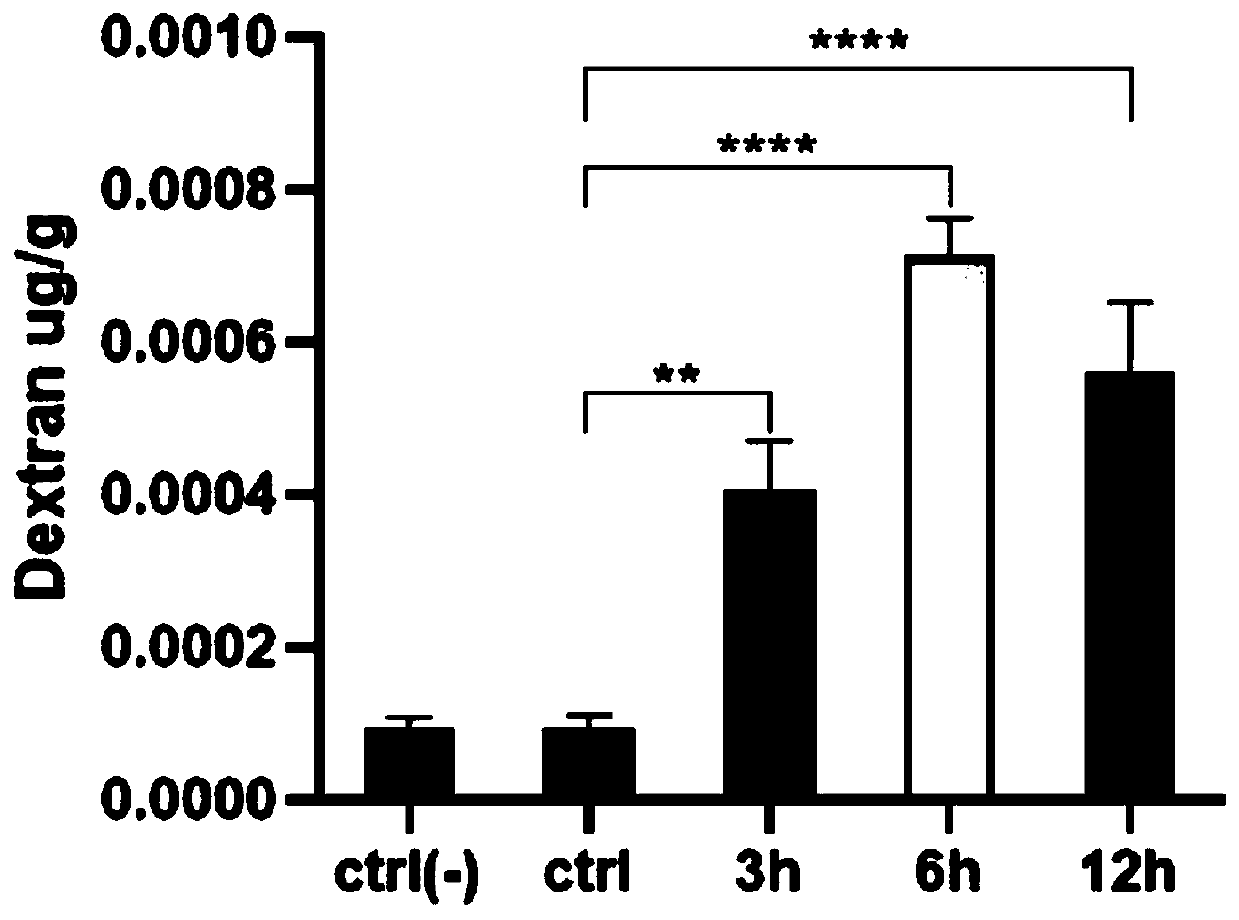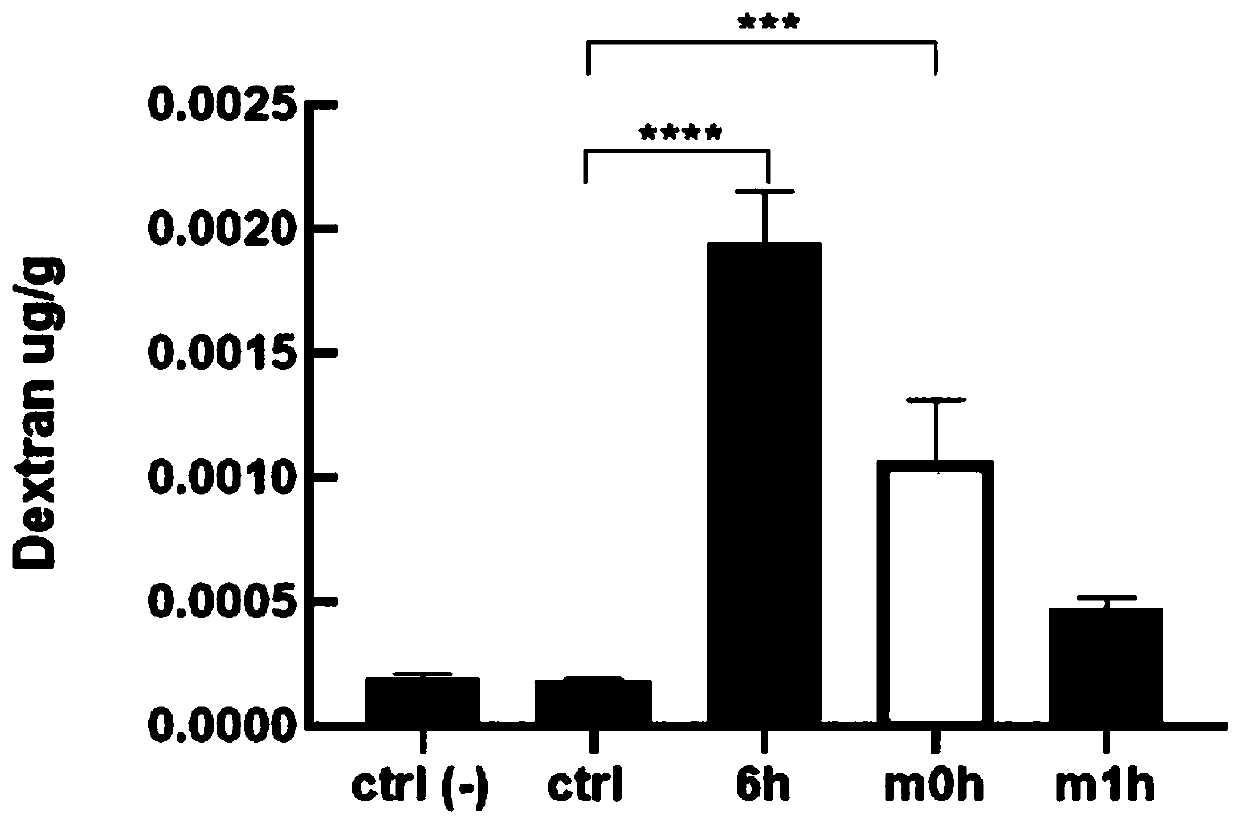Application of mouse umbilical cord mesenchymal stem cells to protection of blood-brain barrier function from being damaged after skin is scaled
A technology for mesenchymal stem cells and skin protection, applied in the field of immunology, can solve the problems of unpublished blood-brain barrier treatment technology, and the acquisition of human mesenchymal stem cells is not large. Effect
- Summary
- Abstract
- Description
- Claims
- Application Information
AI Technical Summary
Problems solved by technology
Method used
Image
Examples
Embodiment 1
[0028] Example 1 In vitro isolation and culture of mouse umbilical cord mesenchymal stem cells
[0029] The source of stem cells is obtained by in vitro expansion and culture of fetal mouse-derived cells
[0030] (1) Obtain the umbilical cord of the fetal mouse;
[0031] (1.1) Execute the C57 pregnant mice with a gestational age of 19-20 days, and soak them in alcohol for disinfection;
[0032] (1.2) Cut open the abdomen of the mouse to expose the abdominal cavity, separate the fetal mouse and place it in a sterile petri dish or operation tray;
[0033] (1.3) Cut the fetal membranes to expose the fetal mouse and placenta, expose the umbilical cord, and fix the two ends of the umbilical cord with 8cm hemostatic forceps, cut the umbilical cord outside, and put the separated umbilical cord into a sterile petri dish, repeat the above steps until all The fetal mouse umbilical cord was separated;
[0034] (2) Put the umbilical cord of the fetal mouse into a petri dish, cut it int...
Embodiment 2
[0058] Example 2 Preparation of mouse umbilical cord mesenchymal stem cell drug for treating blood-brain barrier permeability after scalding in mice
[0059] 1) Count the freshly obtained P3 mouse cells or the thawed P3 mouse cells using a cell counter, about 5-6*10 6 / ml;
[0060] 2) Wash 2 times with 2ml PBS, add 1ml trypsin, and incubate in a 38°C incubator for 2 minutes
[0061] 3) After observing all the suspension of cells under a microscope, add 3ml DMEM (containing 10% fetal bovine serum and 1% penicillin) and mix well, then inhale into a 15ml centrifuge tube;
[0062] 4) Put it into a centrifuge for centrifugation, the centrifugation speed is 1000rpm, and the centrifugation time is 5min;
[0063] 5) Take out the centrifuge tube, remove the supernatant, add 500ul of normal saline, and mix well to obtain an injection for protecting the damaged blood-brain barrier after skin burns.
Embodiment 3
[0064] Example 3 Application of Mouse Umbilical Cord Mesenchymal Stem Cells to Treat Blood Brain Barrier Permeability Changes in Scalded Mice
[0065] 1. Establishment of scald model in mice
[0066] Healthy 7-week-old mice were selected and randomly divided into 6 groups, 6 mice in each group. The mouse was anesthetized and the back skin was removed, and the skin hair on the back of the mouse was removed with a shaver, the size of which was 2 cm in diameter. Then, a constant temperature and constant pressure scalding apparatus was used to scald the mouse's back for 3 seconds at a scalding temperature of 90-94° C., with a scalding pressure of 500 g.
[0067] 2. Select one group as the control group. Before scalding, each mouse was injected with 10kDa fluorescent tracer at 0.5ml / kg through the tail vein of the control group. The mice in each group were treated at 0, 1, 3, 6, and 12 hours after scalding. After femoral artery bloodletting and killing, the brain tissue of the fr...
PUM
 Login to View More
Login to View More Abstract
Description
Claims
Application Information
 Login to View More
Login to View More - R&D
- Intellectual Property
- Life Sciences
- Materials
- Tech Scout
- Unparalleled Data Quality
- Higher Quality Content
- 60% Fewer Hallucinations
Browse by: Latest US Patents, China's latest patents, Technical Efficacy Thesaurus, Application Domain, Technology Topic, Popular Technical Reports.
© 2025 PatSnap. All rights reserved.Legal|Privacy policy|Modern Slavery Act Transparency Statement|Sitemap|About US| Contact US: help@patsnap.com



